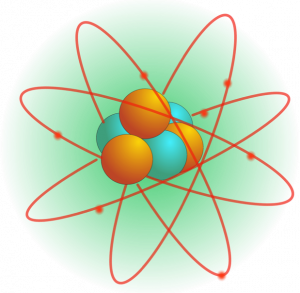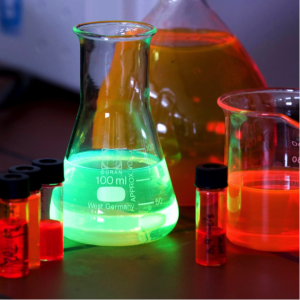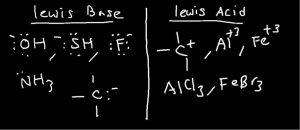- Master A-level Chemistry with our expert tips and techniques. Boost your exam performance with practical advice and strategies.
Understanding The A Level Chemistry Landscape
Studying A-Level Chemistry can seem daunting, especially if you’re transitioning from O-Level Chemistry. However, understanding the subject doesn’t have to feel overwhelming. A simple step, like watching chemistry-related videos or using analogies, can make a big difference. Analogies, for instance, are highly effective tools to explain complex concepts in relatable ways.
For many students, chemistry might initially appear intimidating. This is especially true for JC students tackling new subjects. But with consistent effort and by learning concepts one step at a time, students can overcome initial fears. Keeping an open mind and experimenting with various study techniques can also spark curiosity. With the right approach, students not only grasp the material better but often achieve top scores in their exams.
Unlike O-Level Chemistry, the A-Level syllabus covers more topics in greater detail. Students must build a deeper understanding of core concepts and expand their knowledge base. If you’re finding it difficult to prepare for your exams, don’t worry—there are many ways to overcome these challenges and succeed.
Tips For A Level Chemistry Examinations
Avoiding common mistakes can significantly improve your performance. Here are some targeted tips organized by paper type and key topics to help with your revision.
Ace IGCSE Chemistry with expert tips Download the guide for free!
General Tips for Paper 1
- Carefully read questions that require selecting a combination of answers. Understand what is asked before choosing.
- Eliminate incorrect options by crossing them out. This helps narrow down your choices effectively.
General Tips for Papers 2, 3, 5, and 6
- Answer Precisely: If asked for two observations, provide exactly two; including extras may cost marks.
- Show Your Workings: In calculations, ensure the final answer has the correct number of significant figures.
- Revise Syllabus Definitions: Memorize definitions word-for-word, as deviations can lead to incorrect answers.
- Draw Accurate Diagrams: Fill the given space, label all components, and ensure your diagrams meet the requirements.
- Highlight Keywords: Look for “hidden words” in questions, such as “diatomic gas,” to avoid missing critical details.
General Tips On Topics For Papers 1, 2 & 3
Acids and bases
Don’t confuse the pH scale with the degree of acidity. The more acidic the substance, the lower the pH – learn this by remembering that ‘a’ (for acid) is the lowest numbered letter of the alphabet (1.30) A common error is to think that less sodium hydroxide is needed to neutralise a weak acid than to neutralise a strong acid of the same concentration. The same amount is needed because the hydroxide is reacting with all the acidic hydrogens in the molecule, not just those that have ionised (3.6(b)(ii)) The phrase ‘explain why this acid is acting as a base’ demands a chemical reason (usually based on particle theory). The examiner is looking for an answer involving proton transfer. Vague answers (such as ‘it is neutralising the base’) are not accepted as they do not give an explanation (3.2(b)(iv)) Simple inorganic salts such as sodium chloride are generally neutral when dissolved in water – they are not acidic (1.3) Nitric acid is a strong, not a weak, acid (6.7(c))
Air and water
To remember that carbon monoxide is poisonous (it binds to haemoglobin), think of the ‘nox’ in carbon monoxide as being short for noxious (poisonous). The effects of pollutant gases on nature are often confused, as not all pollutant gases are acidic. Know the different effects of carbon monoxide, sulphur dioxide and carbon dioxide (1.31) A common error is to think that fume cupboards keep air away from a reaction. Fume cupboards have a continuous airflow to allow poisonous vapours to escape through the fan (6.3(d)) 
Atomic structure and bonding
It is a common mistake to count the bonds and not the electrons when asked about the number of electrons shared between the atoms in a molecule. For example, the number of shared electrons in methane is eight, not four (1.8) Take care when writing electronic structures including hydrogen. Always show the hydrogen atom either as a circle or (if ionic) by its symbol. It is best practice to write the symbol of the atom in the centre so it is clear to the examiner which atom is which (2.1(f)(i)) When writing dot-and-cross diagrams for ionic structures, put the charge outside of the brackets, at the top, not in the centre of the atom When asked about the number of covalent bonds in a compound, focus on the outer energy level/shell electrons that are shared, not the total number of electrons. Remember that some molecules have nonbonding pairs of electrons e.g. nitrogen (3.1(b)(i)) When drawing dot-and-cross diagrams for molecules such as nitrogen which have only three bonding pairs of electrons, don’t forget to draw in the lone pairs of electrons. Remember that there must be eight electrons surrounding each atom (3.3(b)) Practice drawing diagrams of giant molecule structures, including silicon dioxide, diamond and graphite, as these are nearly always drawn badly. You must show the continuation bonds (3.1(c)(i))
Electrochemistry
A common mistake is to think that sulphate ions break up during the electrolysis of aqueous solutions into sulphur dioxide. In fact, oxygen is given off at the positive electrode (from the electrolysis of the water) (3.5(b)(ii)) If the exam paper shows an electrical circuit to test conduction, observations can also include what can be seen to be happening in the circuit e.g. ‘the bulb lights up’ (6.3(a))
Energy changes
If asked whether a reaction is endothermic or exothermic, remember the following: endothermic – heat is put in (e.g. you have to heat with a Bunsen to get a reaction); exothermic – heat is given out (e.g. burning fuels and neutralisation reactions are always exothermic) (1.18)
Equations, formulae and moles
If asked for a word equation, do not write a symbol equation. A word equation tests knowledge of chemical names. Although a correct symbol equation is often accepted this is not guaranteed and if you make an error, you won’t get the mark A common error is to think that a nitrate ion has a 2- charge. The formula for the nitrate ion is NO 3 -. This makes the formula for nitric acid HNO 3 [(1.9), (3.4(a)(i))] The charge on a silver ion is 1+. A common mistake is to think that silver has a 2+ charge When working out formulae, don’t be confused by oxidation numbers. A common mistake is to think that the formula for lead(IV) oxide is PbO4 or that lead(II) nitrate is Pb2 (NO3 ). In a formula, you have to balance the positive and negative charges. Lead(IV) = 4+, lead(II) = 2+, oxide = 2- and nitrate = 1-. So lead(IV) oxide is PbO2, and lead(II) nitrate is Pb(NO3 ) 2 (1.9) If asked to name a salt formed in a particular reaction, don’t put down any other product or you will lose a mark (2.1(f)(ii)) When explaining redox reactions, make sure you understand exactly what is being asked, especially if the question says ‘use the equation…’. Don’t just give a definition of redox in terms of electron loss or gain. If a question says ‘use the equation to explain why the iron oxide is reduced, you must refer to the species in the equation in your answer, e.g. ‘the iron oxide loses its oxygen’. ‘Iron oxide gains electrons’ is incorrect (2.6(b)), (3.1(b)(iii)) When calculating moles, if you are given an equation such as: Mg + 2CH3 CO 2 H → (CH3 CO 2 ) 2 Mg + H2 ignore the 2 in the equation when calculating the molar mass of ethanoic acid. The molar mass of ethanoic acid is 60, not 120. However, remember when calculating reacting masses that the 2 needs to be taken into account. Experimental methods If you are distilling an aqueous solution of salt, the salt itself does not evaporate as it has too high a boiling point. Only the water evaporates (1.30) If you think these tips will come in handy, then we are glad to be of help,
Boost your grades with tailored lessons Start Your Free Trial!
How Tutopiya Can Help
If you’re still struggling with A-Level Chemistry, consider enrolling in Tutopiya’s personalized online tuition program. Our expert tutors offer 1-to-1 guidance in a virtual classroom, with recorded lessons for future review.
Nuha Ghouse
Nuha Gouse is the Co-founder of Tutopiya and is equipped with a first class honours Math degree from Imperial College, London. Her mission is to provide personalized individual lessons online where students from around the world can learn at their own pace and convenience.





